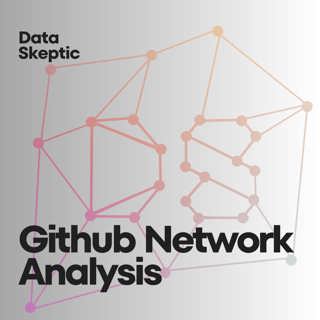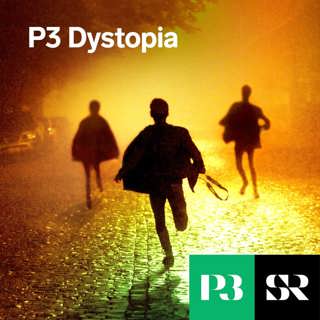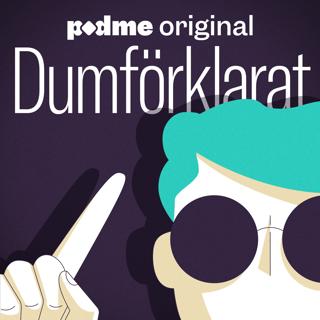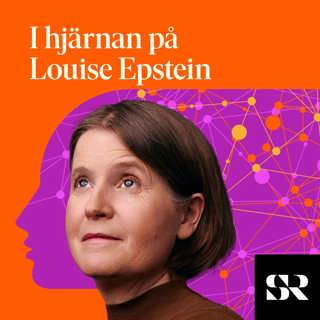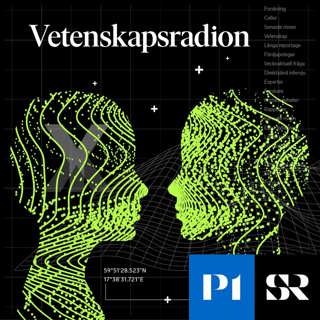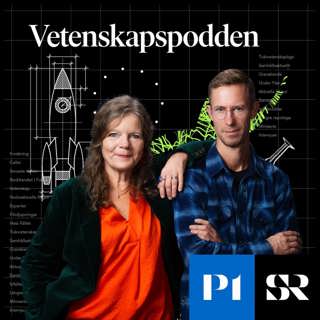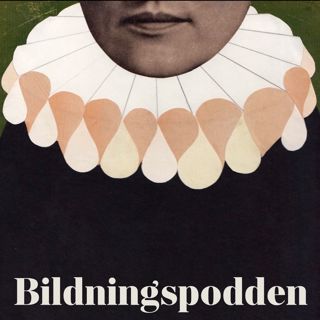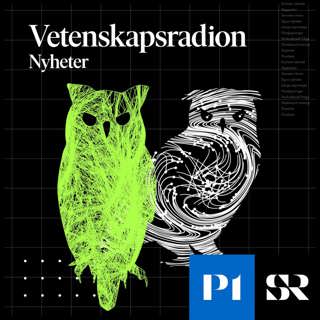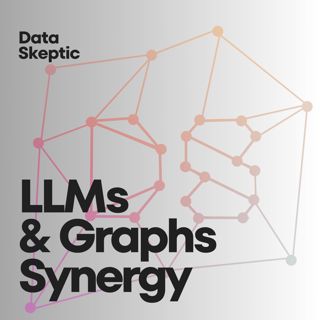
LLMs and Graphs Synergy
In this episode, Garima Agrawal, a senior researcher and AI consultant, brings her years of experience in data science and artificial intelligence. Listeners will learn about the evolving role of knowledge graphs in augmenting large language models (LLMs) for domain-specific tasks and how these tools can mitigate issues like hallucination in AI systems. Key insights include how LLMs can leverage knowledge graphs to improve accuracy by integrating domain expertise, reducing hallucinations, and enabling better reasoning. Real-life applications discussed range from enhancing customer support systems with efficient FAQ retrieval to creating smarter AI-driven decision-making pipelines. Garima's work highlights how blending static knowledge representation with dynamic AI models can lead to cost-effective, scalable, and human-centered AI solutions. ------------------------------- Want to listen ad-free? Try our Graphs Course? Join Data Skeptic+ for $5 / month of $50 / year https://plus.dataskeptic.com
10 Feb 34min

A Network of Networks
In this episode, Bnaya Gross, a Fulbright postdoctoral fellow at the Center for Complex Network Research at Northwestern University, explores the transformative applications of network science in fields ranging from infrastructure to medicine, by studying the interactions between networks ("a network of networks"). Listeners will learn how interdependent networks provide a framework for understanding cascading failures, such as power outages, and how these insights transfer to physical systems like superconducting materials and biological networks. Key takeaways include understanding how dependencies between networks can amplify vulnerabilities, applying these principles to create resilient infrastructure systems, and using network medicine to uncover relationships between diseases, potential drug repurposing and the process of aging. ------------------------------- Want to listen ad-free? Try our Graphs Course? Join Data Skeptic+ for $5 / month of $50 / year https://plus.dataskeptic.com
4 Feb 46min
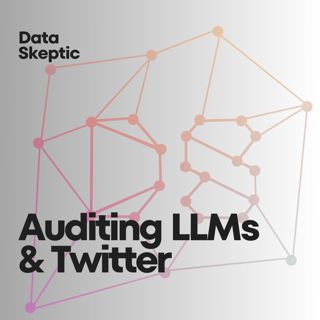
Auditing LLMs and Twitter
Our guests, Erwan Le Merrer and Gilles Tredan, are long-time collaborators in graph theory and distributed systems. They share their expertise on applying graph-based approaches to understanding both large language model (LLM) hallucinations and shadow banning on social media platforms. In this episode, listeners will learn how graph structures and metrics can reveal patterns in algorithmic behavior and platform moderation practices. Key insights include the use of graph theory to evaluate LLM outputs, uncovering patterns in hallucinated graphs that might hint at the underlying structure and training data of the models, and applying epidemic models to analyze the uneven spread of shadow banning on Twitter. ------------------------------- Want to listen ad-free? Try our Graphs Course? Join Data Skeptic+ for $5 / month of $50 / year https://plus.dataskeptic.com
29 Jan 40min
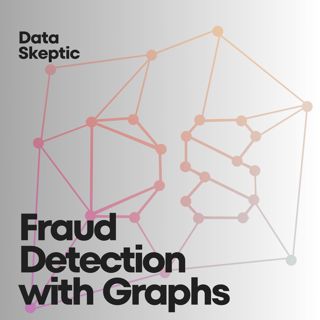
Fraud Detection with Graphs
In this episode, Šimon Mandlík, a PhD candidate at the Czech Technical University will talk with us about leveraging machine learning and graph-based techniques for cybersecurity applications. We'll learn how graphs are used to detect malicious activity in networks, such as identifying harmful domains and executable files by analyzing their relationships within vast datasets. This will include the use of hierarchical multi-instance learning (HML) to represent JSON-based network activity as graphs and the advantages of analyzing connections between entities (like clients, domains etc.). Our guest shows that while other graph methods (such as GNN or Label Propagation) lack in scalability or having trouble with heterogeneous graphs, his method can tackle them because of the "locality assumption" – fraud will be a local phenomenon in the graph – and by relying on this assumption, we can get faster and more accurate results. ------------------------------- Want to listen ad-free? Try our Graphs Course? Join Data Skeptic+ for $5 / month of $50 / year https://plus.dataskeptic.com
22 Jan 37min
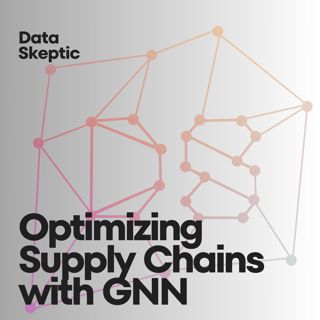
Optimizing Supply Chains with GNN
Thibaut Vidal, a professor at Polytechnique Montreal, specializes in leveraging advanced algorithms and machine learning to optimize supply chain operations. In this episode, listeners will learn how graph-based approaches can transform supply chains by enabling more efficient routing, districting, and decision-making in complex logistical networks. Key insights include the application of Graph Neural Networks to predict delivery costs, with potential to improve districting strategies for companies like UPS or Amazon and overcoming limitations of traditional heuristic methods. Thibaut's work underscores the potential for GNN to reduce costs, enhance operational efficiency, and provide better working conditions for teams through improved route familiarity and workload balance.
15 Jan 38min
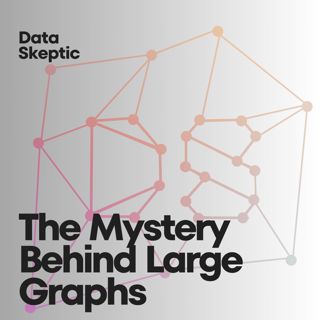
The Mystery Behind Large Graphs
Our guest in this episode is David Tench, a Grace Hopper postdoctoral fellow at Lawrence Berkeley National Labs, who specializes in scalable graph algorithms and compression techniques to tackle massive datasets. In this episode, we will learn how his techniques enable real-time analysis of large datasets, such as particle tracking in physics experiments or social network analysis, by reducing storage requirements while preserving critical structural properties. David also challenges the common belief that giant graphs are sparse by pointing to a potential bias: Maybe because of the challenges that exist in analyzing large dense graphs, we only see datasets of sparse graphs? The truth is out there… David encourages you to reach out to him if you have a large scale graph application that you don't currently have the capacity to deal with using your current methods and your current hardware. He promises to "look for the hammer that might help you with your nail".
10 Jan 47min
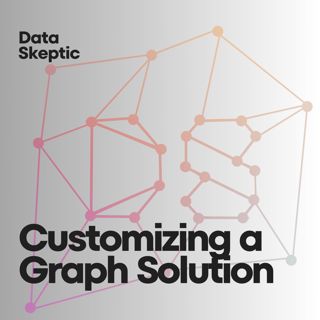
Customizing a Graph Solution
In this episode, Dave Bechberger, principal Graph Architect at AWS and author of "Graph Databases in Action", brings deep insights into the field of graph databases and their applications. Together we delve into specific scenarios in which Graph Databases provide unique solutions, such as in the fraud industry, and learn how to optimize our DB for questions around connections, such as "How are these entities related?" or "What patterns of interaction indicate anomalies?" This discussion sheds light on when organizations should consider adopting graph databases, particularly for cases that require scalable analysis of highly interconnected data and provides practical insights into leveraging graph databases for performance improvements in tasks that traditional relational databases struggle with.
16 Dec 202438min
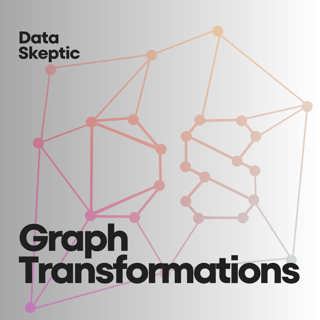
Graph Transformations
In this episode, Adam Machowczyk, a PhD student at the University of Leicester, specializes in graph rewriting and its intersection with machine learning, particularly Graph Neural Networks. Adam explains how graph rewriting provides a formalized method to modify graphs using rule-based transformations, allowing for tasks like graph completion, attribute prediction, and structural evolution. Bridging the worlds of graph rewriting and machine learning, Adam's work aspire to open new possibilities for creating adaptive, scalable models capable of solving challenges that traditional methods struggle with, such as handling heterogeneous graphs or incorporating incremental updates efficiently. Real-life applications discussed include using graph transformations to improve recommender systems in social networks, molecular research in chemistry, and enhancing IoT network analysis.
9 Dec 202432min
